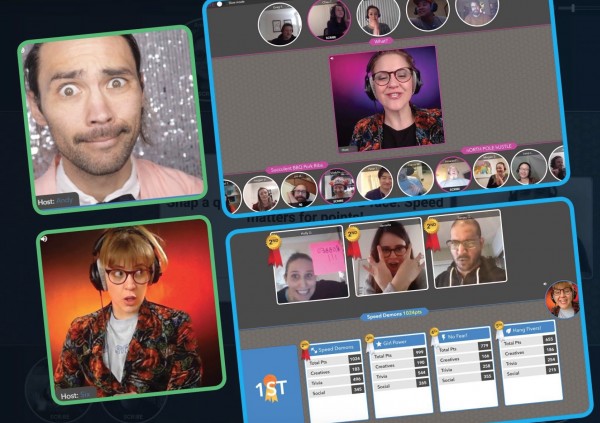How To Recognise and Navigate Digital Toxicity in a Virtual Workplace
A toxic workplace is more than just a job you dislike. A toxic workplace is characterised by negative and harmful behaviours, attitudes, and practices that have a detrimental impact on the wellbeing, morale, and productivity of its employees. In short, it is a workplace that does not provide psychological safety or a feeling of security to its employees.
Digital toxicity can include bullying, racism, sexism, arguing, gossip, harassment, inappropriate comments, distrust, or unwelcome jokes. Toxicity doesn’t only come in the form of behavioural problems, it can consist of procedural issues as well. This could be a lack of boundaries, unclear or unreasonable job expectations, or micro-management.
Unfortunately, the rise of the remote work environment has also created its own complex challenges. The physical distance between people can often mean that these behaviours can go under the radar or unchallenged. The use of various technologies has also blurred the boundaries between our work and personal lives, with research from SEEK showing that 20% of employees feel pressured to respond to work emails or phone calls outside of their standard work hours.
Also, how we communicate has changed from emails to instant messaging platforms making communication less formal and less professional. As with any form of online communication, it can be taken out of context or the intent misinterpreted. If you’re feeling hurt or targeted at the time or upon reflection later, this can be a sign of toxicity. These interactions or events can often have a snowball effect resulting in decreased engagement and motivation which then can flow on to impact the rest of the team aswell.

How to recognise it
As we have outlined, the signs of toxicity are often harder to spot when working in remote team environments, however, some examples to look out for include:
- Formation of cliques, exclusions of various individuals, or gossipy behaviour
- Employees feel like they need to walk on eggshells
- Poor or lack of communication
- Rapid staff turnover
- Lack of positive feedback or praise
- Poor leadership
- Lack of work-life balance
- Lack of employee growth and development
- Unmotivated colleagues
- Employees battling burnout
How to navigate it
- Approach the person
Assume that the intentions were good. Oftentimes in the digital world, a message has been lost in translation or misinterpreted. So, if you approach the person in question with your concern, and how it made you feel, this can help to clear the air of any ill feelings. Addressing the problem directly and within a timely fashion can assist in the said person being more aware of their content or tone when communicating and prevent any future miscommunications from arising.
- Take the issue to management
Should the issue be more severe or not resolved by speaking to the individual directly, then it may be required to go to your manager or HR. Management must be aware of any issues that are happening within their team so that they can intervene where necessary and provide the support required to affected individuals.
- Set personal boundaries
This relies on you being very clear on what your boundaries are and outlining these to your colleagues and manager. This could involve being clear about your work hours and that you be fully offline outside of work hours. It could also be around the number of video calls and meetings, and how you work best virtually. Convey your message with assertiveness and confidence to your colleagues and manager so they can be clear about where your boundaries lay.
- Set team expectations and standards
This comes from more of a management level but should be a collaborative approach as to what expectations are for your team. This could be part of an onboarding process or in a team training session, where you go about creating and clarifying expectations around technology. This could cover things around how frequently you have team meetings, how prompt you need to be at responding to online messages, and how important/difficult conversations are delivered. Ensuring everyone is on the same page with expectations and team standards allows for courtesy, respect, and transparency for all team members.

How to cultivate a digital wellness culture
Working within a virtual environment it is crucial to place a high level of importance on creating digital wellness amongst the team. What is digital wellness? It’s all about the conscious use of technology to optimise our potential. It’s about utilising technology as a tool to succeed without letting it take over every part of our day.
What can you do?
- Build offline relationships. Where possible try to bring the team together in person and if that’s not geographically feasible, then come together online for a social or team-building activity. This is a great way to build ‘out of work’ connections and also improve communication and increase collaboration.
- Whilst we rely on tech to stay connected, having parts of the day that are ‘quiet times’ on the team chat or where emails are muted for a period of time can reduce distractions and increase productivity.
- Being very intentional with the use of technology by reducing the number of video calls or online meetings can also reduce interruptions throughout the day, reducing burnout and increasing productivity.
- Respect individual boundaries. Everyone’s personal circumstances and preferences are different, so ensure you respect the boundaries each team member has outlined for themself and how they work best.
- Lead from the front with offline time. Practice what you preach about taking the time to turn the work phone off or mute emails outside of work hours. Try to avoid or at the least minimise messages or emails you are sending to your team outside of standard working hours.

Where to get further help
If you're an employee looking to Seek further support, or an employer looking for additional information below are a number of resources that may be of assistance.

Emily has a background in corporate sales and recruitment. Experience, that allows her to understand businesses and people, and to create compelling copy and content that showcases just that.
Let's do this
Enquire now
Add activities to your quote, or just tell us what you want to do.

